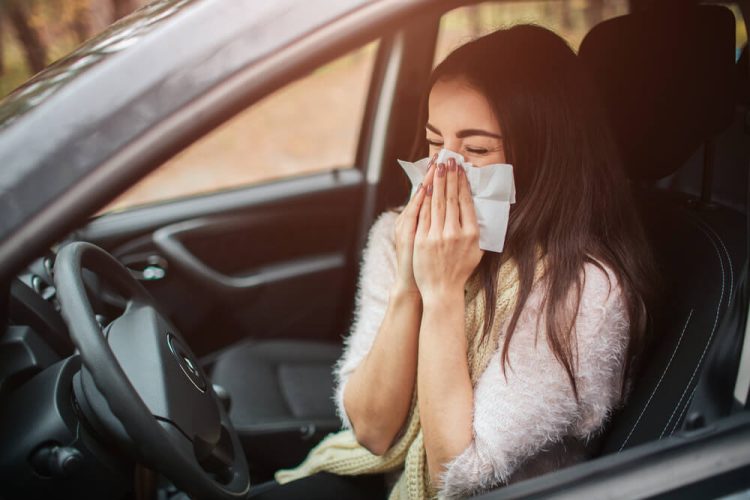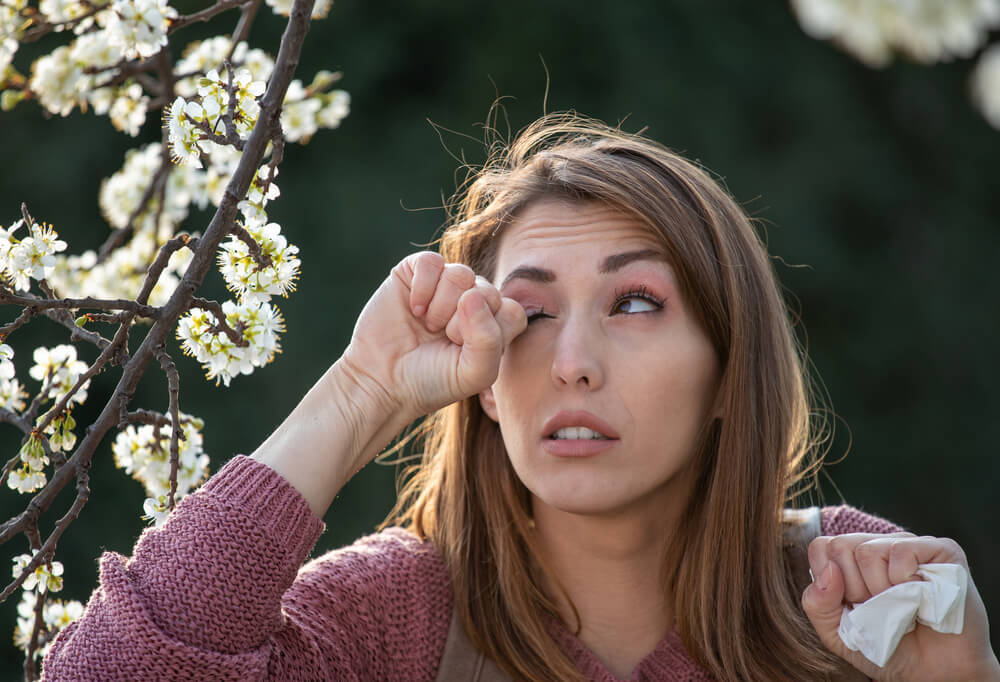
You’re probably already aware of certain spring driving hazards, such as heavy April showers causing floods and making the roads slicker. But did you know that the rise in pollen and springtime allergies can also be a huge concern?
Along with getting the right auto insurance, learning how to handle allergens on the road is a key part of being a responsible driver and minimizing your risks behind the wheel. Exploring how pollen affects driving is one of the most important things you can do to stay safe on the road as flowers start blooming and bees start buzzing.
Pollen’s Power: More Than Just Sneezes and Sniffles
Anything that obstructs your vision or your focus can be dangerous when you’re on the road. That includes the watery eyes and sudden sneezes that occur when you have bad allergies. Plus, certain kinds of pollen can actually be a physical hazard by causing chalky, dusty buildup on your windshield. The worst part is that these risks can be quite subtle, and there are tons of ways to make your seasonal allergies worse, so you may not think twice before hopping in your car.
Symptoms of Allergies That Can Impact Driving Safety
Even if pollen isn’t actively visible, your symptoms can get pretty intense during allergy season. On a basic level, allergens can cause watery, swollen eyes that could obstruct your vision. If your eyes are constantly watering up due to an allergic reaction, you may not be able to see hazards on the road.
Spring allergies can also cause sneezing fits, which can take your eyes off the road and impact your steering. Even though a sneeze only lasts a split second, that’s all you need to get into an accident.
Some allergy medications can also cause drowsiness, so it’s best to understand how you are affected before getting behind the wheel.
Pollen can also cause more subtle, ongoing problems. For example, many people get fatigued and drowsy when they’ve been dealing with allergy symptoms, as sinus issues and allergy headaches can be physically exhausting. This can make it hard to focus and stay fully alert while driving.
Preparing for Battle: Strategies for Allergy-Proofing Your Drive
Luckily, you can fight against spring driving hazards with a bit of basic preparation. Along with taking non-drowsy meds, you can stay safe by keeping your vehicle in tip-top shape. You can successfully navigate pollen season by staying on top of your car’s maintenance and physical health.

Filtration and Air Quality Control in Vehicles
Keeping the air clear in your car’s cabin is one of the best ways to ward off pollen. Start by checking your air filter to see if it needs to be replaced. Regularly cleaning your car’s air filter is an important part of regular auto maintenance at any time of year, but it can also make allergy season driving a bit less uncomfortable. An old, clogged filter won’t be as effective at keeping out allergens as a brand-new replacement.
You’ll also want to turn on your car’s air recirculation button. This will keep the filtered air in your car instead of pulling in new, pollen-heavy air from the outside. Finally, keep your windows tightly sealed to ensure allergen particles don’t float into your vehicle while you’re driving.
Car Cleaning Essentials After Exposure to Pollen
If you wake up with a runny nose and see a thick blanket of yellow pollen outside, you’ll know spring has sprung. By doing some spring car maintenance, you can limit the impact of these brand-new allergens. Just like spring cleaning can prevent homeowners claims, it can also reduce potential hazards while driving and decrease the chance of making an auto claim.
First, learn how to get pollen off windshields. You’ll want to do more than just turn on your wipers. Pollen can leave behind a sticky or dusty residue that obstructs your windshield and keeps you sneezing. Try heading to a quick car wash or gently spraying your windshield with your garden hose anytime you notice major buildup.
The Broader Picture: Allergies and Driver Safety Statistics
You may think it’s a bit dramatic to worry about driving with allergies. However, the facts speak for themselves. Spring pollen on your car is more than just annoying; it actually increases the chance of getting into an accident, making it one of the major spring driving hazards. Here’s a breakdown of the data:
- Around one-fifth of Americans deal with seasonal allergies.
- Fatal accidents increase by almost 6% on high-pollen days.
- 63.8% of people with allergy-related drowsiness feel that it has an impact on their driving.
Stay Safe This Spring — Get Reliable Auto Insurance With Freeway
Although pollen particles may be tiny, they can have a huge effect on your driving abilities. Thanks to the sneezing, watery eyes, and drowsiness that come with spring flowers, allergies can be seriously distracting on the road. Thankfully, removing pollen from your car, filtering your cabin air, and taking non-drowsy meds can all decrease the impact of allergens on your driving.
For an extra layer of protection, you’ll also need a dependable insurance plan. At Freeway Insurance, we provide affordable, reliable policies designed to protect you from both seasonal and year-round hazards. Protect yourself on the road by signing up at a local Freeway Insurance office, over the phone at 800-777-5620, or even online.



